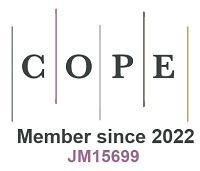MOFs-based single/dual-atom catalysts: atomically active sites engineering for efficient CO2 reduction
Abstract
The excessive emission of CO2 has seriously threatened the global climate environment and human health, the efficient CO2 reduction reaction (CO2RR) as an effective method to reduce CO2 emissions has become a hot spot in the current catalyst field. Metal-organic frameworks (MOFs) serve as ideal substrates for the preparation of single-atom catalysts (SACs) and dual-atom catalysts (DACs), attributed to their distinctive structure and superior pore characteristics. These catalysts address the issues of inadequate selectivity and activity in CO2RR by facilitating efficient electron transfer at the atomic level. This review provides an overview of the design strategies for active sites in MOFs-based SACs and DACs, focusing on the synergy between single-atom and multi-atom configurations. It comprehensively summarizes the mechanisms of both photocatalytic and electrocatalytic CO2RR and the relationship between active sites and catalytic efficiency. Additionally, the review provides an in-depth discussion of their applications in electrocatalysis and photocatalysis of CO2RR, highlighting specific examples and advancements in these fields. Finally, the challenges of the future directions for active sites design and the development of improving catalytic activity in CO2RR at industrial current density of MOFs-based SACs/DACs were looked forward.
Keywords
Metal-organic frameworks, single-atom catalysts, dual-atom catalysts, photocatalysis, electrocatalysis, CO2RR
Cite This Article
Li J, Zhang W, Peng Y, Zhang Y, Wang S, Wu Q, Zhu W, Liu S, Dai Z, Wang D. MOFs-based single/dual-atom catalysts: atomically active sites engineering for efficient CO2 reduction. Chem Synth 2025;5:[Accept]. http://dx.doi.org/10.20517/cs.2025.12












